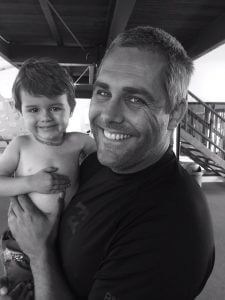Baby and Toddler swimming lessons often recommend that parents stay in the water and participate in their child’s lesson. World Wide Swim School is a huge believer in parents staying involved in the learning process until the age of 4. This article will discuss the many reasons that we believe in parental involvement in the learn to swim process. Of course we understand that every swim school, family and individual situation is different. But our philosophy remains the same for teaching swimming to children under the age of 4 years.
Maximum Practice Time
Parents in the water with their children increase the time that each swimmer is able to participate in activities. The one-on-one practice and support gives swimmers an opportunity to be constantly practicing and honing skills. These skills are needed for great propulsion through the water. Parents can assist with keeping swimmers moving. Whether they are moving in a wave formation altogether or in a circuit or circular formation where swimmers take turns. No matter how great a swim teacher is, there will always be more movement with parental involvement.
Physical Manipulation
Parents can place hands on their child and physically manipulate arms and legs to create great swimmers. Physical manipulation of kicking and paddling creates neuromuscular patterns between the brain and the muscles. The more a child can receive physical reinforcement the better their skills will become. Parents should ensure when manipulating that:
- Paddles are focused on actions under the water – getting a good feel for the water will help a child move through the water effectively
- Restrict the depth of the kicks so that the knees are bent just a little bit – too much bend in the knee will promote bicycle kicks or create a less effect kicking pattern
- Paddle manipulation works better when done on the spot as opposed to hopping/moving through the water. Manipulate with swimmer on your knee and then send them on their way
- Kicking manipulation is best done with a kickboard or on the ledge to stabilise swimmer and keep them on top of the water. If kicking manipulation happens in deeper water swimmer may get a fright or be unable to take a breath when needed.
Safe and Secure Environment
With parents offering 1 on 1 supervision within the lesson under the watchful eye of the instructor, swimmers safety is paramount. It is important that instructor and parent not only discuss but practice safety scenarios such as safety slide in the water from the side, climbing out independently if possible, turning back to safety, only swimming with parent supervision and more.
Parent and Child Bonding
In today’s busy society, there aren’t many opportunities where parent and child spend half an hour focused on each other. Technology, siblings, other activities and more take up most of the precious time in our daily lives. Swimming lessons offer parent and child a special bonding time. This is a time where everything else is left outside the pool and the focus is on the swimming lesson.
Discipline
Having parents in the water is a huge help in the disciplining of the class for the instructor. Many parents have different styles of parenting and disciplining their children. With parent participation in the water they can ensure that this discipline style continues throughout swimming lessons. It can be difficult to keep a group of young swimmers to listen or sit still and wait their turn. Parents can help instructors achieve that by assisting their child within the swimming lesson.
Having the parent in the water and participating doesn’t mean that the child ‘needs’ their help to swim. Of course they may be proficient in their skills to swim by themselves. Swimmers will have the opportunity to practice independent swimming throughout the lesson. However, by achieving the things discussed in this article parents, swim teachers and swimmers can work together to produce excellent technique. As well as a good feel for the water and a love for swimming and water safety.
Laurie Lawrence


